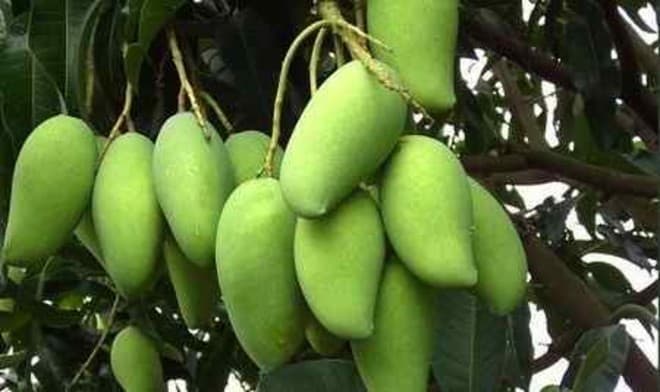Dika, a tree native to West Africa, provides food and income to farmers. The tree is so valuable that when forests are cleared for farmland or firewood, the dika tree is usually saved from being chopped down. The tree can grow up to 40 meters and bears small fruits that look like small mangoes. It can take up to 10 to 15 years for a newly planted tree to start producing these fruits. The fruit can be eaten fresh or be used to make preserves or juice.
More valuable than the fruits are the seeds of the Dika tree. The nuts, once cracked open, have kernels inside that can be eaten raw or roasted. Dika seeds can also be processed into butter or pressed into cooking oil. More traditionally, the seeds are ground and used as a spice to flavor bland foods. Dika is a staple of the traditional soup, ogbono also known as apon. As a spice, dika is shelf-stable and can last for several years.
The fruits and seeds are manually picked and harvested. Since harvesting is such a labor intensive process, the dika tree is being considered for domestication. There are currently two species of the dika tree, Irvingia gabonensis and Irvingia wombolu. New species are being considered and engineered such that trees could bear fruit within five years of planting. Additionally, not only are these new species able to bear fruit multiple times in a season, the nuts are able to split open naturally. While scientists are looking for ways to domesticate the dika tree, they are also looking for climates where the trees can flourish. Currently, dika trees grow in hot and humid areas; providing shade and assisting in controlling soil erosion.
Dika Recipe:
Meat of choice (beef, chicken, turkey or assorted meat)
2 cups of ogbono seeds
Stock fish head (medium size)
2 medium size dry fish
1 cup of crayfish (ground)
Fluted pumpkin (a bunch)
Half teaspoon of ogiri or ground dawadawa or okpei (local ingredients) (optional)
10 to 15cl of palm oil
About 2 liters of water
salt and pepper to taste
Parboil your meat the normal way, with all the necessary ingredients (2 cubes of knorr or maggi, salt, onions, half T/S of thyme and other spices or flavors of choice).
Add water to the meat after about ten minutes and cook till it is soft enough for consumption. Add the washed dry fish and stock fish, about 10 to 15cl of palm oil, ground crayfish, stir, cover and cook for ten to fifteen minutes.
Add salt and pepper to taste, add a cube of maggi or knorr (optional), add the ground ogbolo seeds, stir and cook for another five minutes. At this point you can add the sliced okra in case you chose to make a blend of Nigerian ogbono and okra soup.
Cook for about three minutes before adding the chopped fluted pumpkin leaves or bitter leaves.
Assorted meat is always preferred above all other types of meat in Nigeria.
Sign up for Food Tank’s FREE Weekly Newsletter. More than 110,000 Subscribers And Counting. Click HERE to join.













